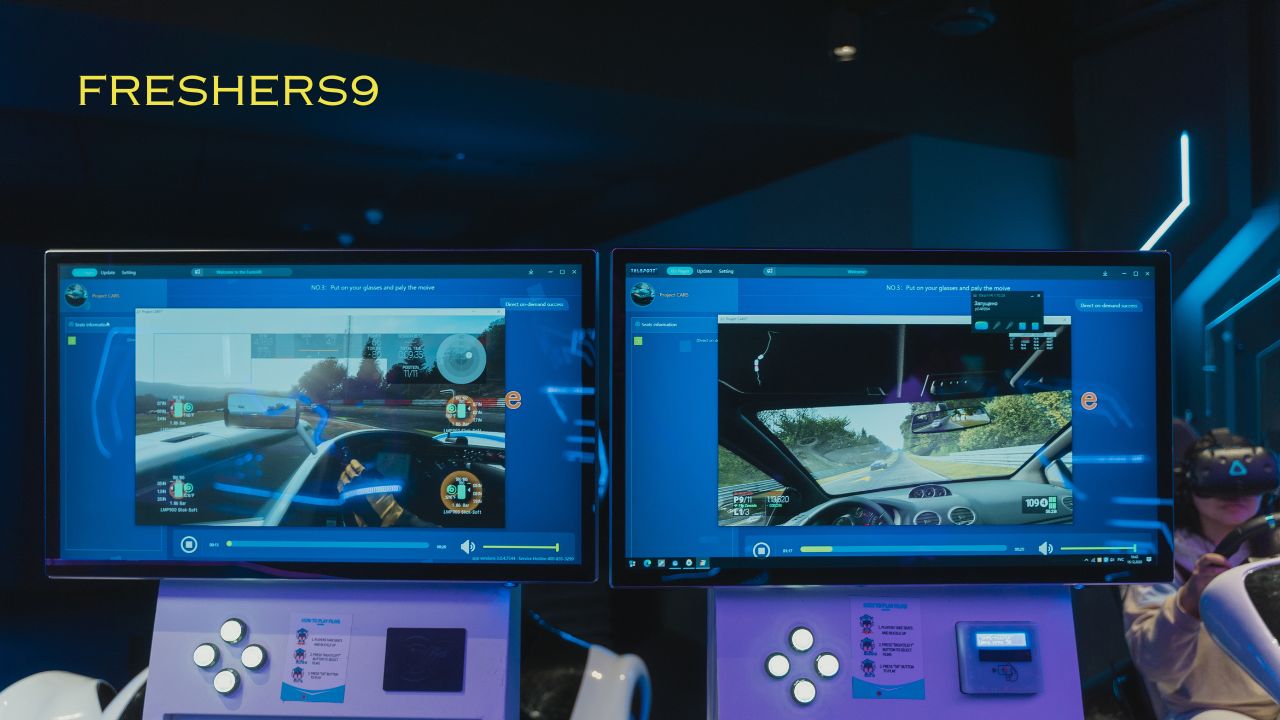The Future of AR Technology: Advancements, Impacts, and Potential Applications
Augmented Reality (AR) technology, once a futuristic concept, is now increasingly integrated into various aspects of our lives—from entertainment and gaming to education, healthcare, manufacturing, and beyond. AR overlays digital information onto the real world, enhancing our perception and interaction with our surroundings. As AR continues to evolve, propelled by technological advancements and innovative applications, its potential to transform industries and everyday experiences is expanding rapidly. This article delves into the future of AR technology, exploring upcoming advancements, their potential impacts, and the diverse range of applications that could shape our future.
Advancements in AR Technology
1. Hardware Innovations
The evolution of AR hardware is crucial to unlocking its full potential. Key advancements include:
- Lightweight and Comfortable Wearables: AR glasses and headsets are becoming lighter, more ergonomic, and less obtrusive, enhancing user comfort and adoption.
- Increased Field of View (FOV): Improvements in optical technology are expanding FOV, allowing users to view larger AR overlays without visual limitations.
- Integration with Biometric Sensors: AR devices may incorporate biometric sensors for health monitoring, enhancing user safety and personalized experiences.
2. Software Developments
AR software continues to advance, enabling more immersive and interactive experiences:
- Real-Time Spatial Mapping: Enhanced AR software can create and update detailed 3D maps of environments in real time, improving accuracy and interaction with virtual elements.
- AI and Machine Learning Integration: AI-powered AR applications can analyze user behaviour, optimize content delivery, and provide personalized experiences based on contextual data.
- Cloud-Based AR: Cloud computing facilitates complex AR applications by offloading processing power and storage requirements, enabling scalable and collaborative AR experiences.
3. Sensor and Connectivity Enhancements
- 5G Connectivity: Ultra-fast 5G networks reduce latency and enable seamless streaming of high-definition AR content, enhancing real-time interaction and remote collaboration.
- Advanced Sensors: Integration of advanced sensors such as LiDAR (Light Detection and Ranging) improves spatial awareness and object recognition accuracy in AR environments.
- Environmental Understanding: AR devices are increasingly capable of understanding and interacting with the physical environment through advanced sensors and AI algorithms.
Impacts of AR Technology

1. Transforming Industries
AR is poised to revolutionize various industries, driving innovation and efficiency:
- Manufacturing and Maintenance: AR-enabled smart glasses provide real-time instructions and visual overlays, improving assembly processes, maintenance procedures, and quality control.
- Healthcare: AR enhances surgical procedures with augmented visualizations, assists in medical training through realistic simulations, and facilitates remote consultations and diagnostics.
- Retail and Marketing: AR enables virtual try-on experiences, interactive product demonstrations, and personalized shopping experiences, enhancing customer engagement and sales.
- Education: AR transforms learning by providing interactive simulations, virtual field trips, and personalized learning experiences that cater to diverse learning styles.
2. Enhancing Remote Work and Collaboration
- Remote Assistance: AR facilitates remote support by enabling experts to provide real-time guidance and instructions to field technicians or remote workers.
- Virtual Collaboration: AR-powered virtual meeting spaces and collaborative tools enhance teamwork and communication across geographical locations, fostering innovation and productivity.
3. Augmented Personal Experiences
- Entertainment and Gaming: AR enhances gaming experiences with immersive overlays and interactive gameplay elements, blurring the lines between virtual and real-world environments.
- Travel and Tourism: AR-guided tours and navigation applications provide enriched travel experiences, offering historical insights and interactive sightseeing opportunities.
4. Empowering Accessibility and Inclusivity
- Assistive Technologies: AR applications assist individuals with disabilities by providing real-time visual and auditory aids, enhancing accessibility in various contexts, including navigation and education.
Potential Applications of AR Technology
1. AR in the Automotive Industry
- Augmented Driving Experiences: AR-enhanced heads-up displays (HUDs) provide real-time navigation, safety alerts, and vehicle diagnostics, enhancing driver awareness and safety.
- AR in Vehicle Design and Manufacturing: AR assists in designing and prototyping vehicles, optimizing assembly processes, and improving quality control in manufacturing.
2. AR in Architecture and Construction
- Design Visualization: AR enables architects and clients to visualize and interact with architectural designs in real-world contexts, facilitating design reviews and approvals.
- Construction Site Management: AR assists in project planning, on-site navigation, and monitoring progress, improving efficiency and minimizing errors in construction projects.
3. AR in Retail and E-Commerce
- Virtual Try-On: AR allows customers to virtually try on clothing, accessories, and cosmetics, enhancing the online shopping experience and reducing return rates.
- Interactive Product Demonstrations: AR-powered product demonstrations provide interactive information and customization options, increasing customer engagement and sales conversions.
4. AR in Healthcare and Medical Training
- Surgical Visualization: AR assists surgeons with real-time visualizations of patient anatomy, improving surgical precision and patient outcomes.
- Medical Training Simulations: AR simulations replicate medical procedures and scenarios for training healthcare professionals, offering hands-on learning experiences in a safe environment.
5. AR in Education and Training
- Interactive Learning: AR enhances education with interactive simulations, virtual laboratories, and immersive historical reconstructions, catering to diverse learning styles and engaging students.
- Professional Training: AR provides hands-on training in various industries, from aviation to manufacturing, by simulating complex scenarios and procedures.
Challenges and Considerations
1. Technical Challenges
- Hardware Limitations: AR hardware must evolve to offer lightweight, comfortable wearables with extended battery life and improved processing capabilities.
- Software Complexity: Developing AR applications requires expertise in 3D modelling, computer vision, and UX design, posing challenges in integration and usability.
2. Privacy and Security Concerns
- Data Privacy: AR applications collect and process user data, raising concerns about privacy, consent, and secure storage of sensitive information.
- Cybersecurity: AR devices and networks may be vulnerable to cyber-attacks, requiring robust security measures to protect against unauthorized access and data breaches.
3. User Acceptance and Adoption
- Training and Familiarization: Employees and consumers may require training to use AR effectively, overcoming potential resistance to change and unfamiliar technology.
- Cost and ROI: Initial investment in AR technology and infrastructure may be significant, requiring organizations to conduct thorough ROI analysis and justify expenditures.
Case Studies and Examples
- Case Study 1: IKEA Place
IKEA Place utilizes AR technology to allow customers to visualize furniture and home décor in their own spaces through a smartphone app. This virtual try-on experience enhances the shopping experience and reduces the likelihood of returns.
- Case Study 2: Pokémon GO
Pokémon GO brought AR gaming to mainstream audiences by overlaying virtual Pokémon characters onto real-world environments through smartphones. The game's success demonstrated the potential for AR to create immersive gaming experiences and drive social interactions.
Future Trends and Predictions
1. Advancements in AR Glasses
- Consumer Adoption: AR glasses may become more prevalent in everyday life, offering personalized information and enhanced interaction with the physical world.
- Enterprise Applications: AR glasses could revolutionize enterprise workflows, from manufacturing and logistics to healthcare and remote assistance.
2. Spatial Computing
- Integration with AI: AI-powered spatial computing will enable AR devices to understand and interact with the physical environment more intelligently, enhancing user experiences.
- Contextual Awareness: AR applications will leverage contextual data to provide personalized information and recommendations based on user preferences and environmental cues.
3. AR Cloud
- Persistent AR Experiences: The development of AR cloud infrastructure will enable persistent AR content and shared experiences across devices and locations.
- Collaborative Environments: AR cloud platforms will facilitate real-time collaboration and information sharing in virtual spaces, transforming how teams work and communicate.

Augmented Reality technology is poised to revolutionize industries, enhance personal experiences, and redefine how we interact with our surroundings. As advancements in hardware, software, and connectivity continue to accelerate, the potential applications of AR are limitless—from enhancing workplace productivity and safety to transforming entertainment, education, and healthcare. Organizations that embrace AR technology and innovate with purpose-driven applications will position themselves at the forefront of the digital revolution, driving growth, efficiency, and user engagement in the evolving digital landscape.
As we look towards the future of AR technology, its integration into everyday life holds the promise of creating more connected, immersive, and enriched experiences for individuals and businesses alike.